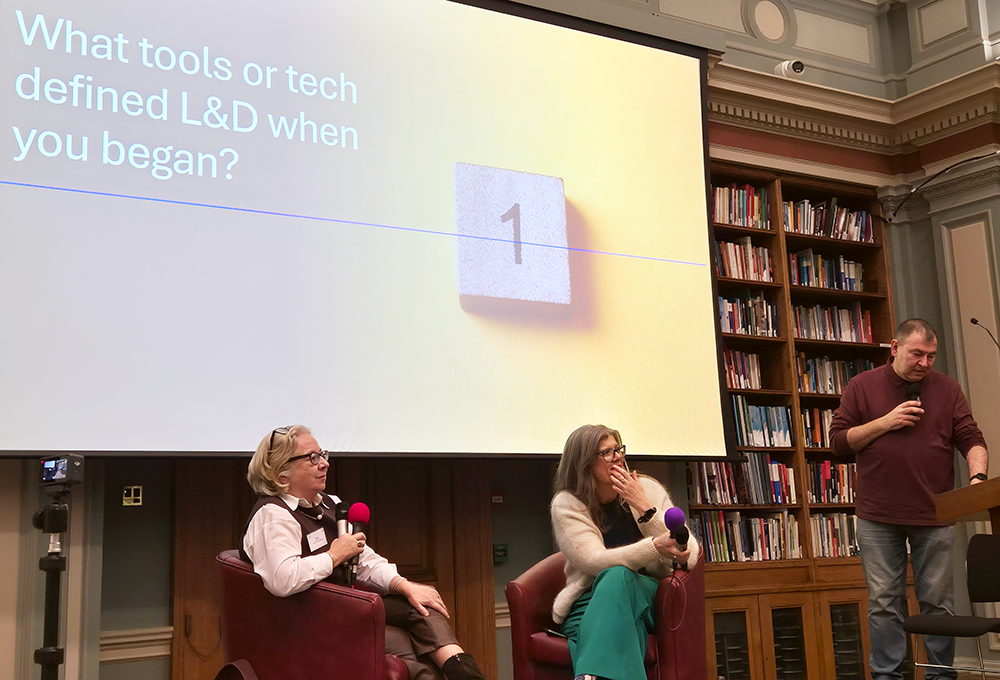Rich Lanchantin says technology needs to stay learner-centric.
Reading time: 4 minutes.
In today’s competitive marketplace, we are seeing a shift in learning methods based on real-time business needs — continuous and measurable job performance and productivity improvements that are tied to precise business objectives.
The ‘more-is-better’ learning mindset has proven to overwhelm employees and be ineffective for organisations that continue to pour money into traditional L&D programs, only to see little to no return on their investment.
Many organisations make significant investments into their LMS, but it’s challenging to assess whether those investments are driving real ROI and changing employee behaviors over time.
These traditional learning programs are typically measured on activity-based, assessment, or completion KPIs alone and fail to provide learning leaders with an understanding of an employee’s capabilities to do their job well.
Traditional metrics only show an employee has participated in and completed a learning program, relying on short-term memory when tested immediately after the program’s completion — and never again. In the end, programs like these result in a compliance exercise that feels a lot less like learning and a lot more like an exercise in futility.
By identifying skills gaps, learning leaders have the data to inform future training needs and enable frontline managers to personalise coaching, which is essential to support continuous professional development.
Today, CLOs are discovering that changing behaviours takes more than just a traditional LMS that fails to spark ongoing and meaningful change with audiences — serving essentially as a ‘digital junk drawer’ of information. Instead, opportunities to really reach the workforce — and in so doing, create a far more engaging and productive learning experience — are just beginning.
This isn’t just better for learners, but it’s exciting for learning professionals, enabling them to focus on the training that really matters to drive key business objectives.
Understanding an employee’s proficiency and engagement in a learning program is emerging as a far more effective measure of whether training investments have paid off, or where knowledge and skills gaps still exist.
By identifying skills gaps, learning leaders have the data to inform future training needs and enable frontline managers to personalise coaching, which is essential to support continuous professional development. In short, proficiency is the new currency of corporate learning — a win-win scenario for employees and learning and business leaders alike.
For proficiency to continuously drive increased productivity and performance, these three best practices are essential when crafting corporate learning programs:
Sync business goals and learning goals
Once business goals are set, learning and business leaders must join forces to first identify competency and knowledge must-haves for an employee to be successful and impact business goals.
Adoption of mobile microlearning tools can help reinforce behaviours, measure proficiency and knowledge gaps, and focus coaching on the weakest areas, all while increasing training efficacy while containing costs. Linking L&D programs to business results keeps the focus on the goal and provides a foundation to measure success.
Create a learning culture through upskilling
Employees are an organisation’s most important investment. It’s crucial to invest in their learning pathway, guide their professional growth, and keep them motivated if performance goals are to be met. Organisations can avoid a disconnect between frontline employees and management by engaging them in training and professional development.
Employees who feel valued will simply be more committed, strive to do their best, and contribute actively to team and company goals. Microlearning solutions are an effective method to upskill and reskill employees in a way in which they best respond.
Microlearning links engagement and upskilling
CLOs and learning leaders should make training a seamless part of the daily workflow by using proven microlearning practices, such as scenario-based simulations and spaced education to stimulate critical thinking and long-term knowledge retention.
When relevant scenario-based challenges are paired with game mechanics and spaced-education delivery techniques — such as the spacing and testing effects — learners are more likely to retain new information for longer and improve existing skills.
Employees are the foundation of a company’s success, and proficiency and engagement are the critical ingredients they need to meet performance and business goals.
For L&D programs to measurably and durably improve knowledge retention and change behavior, incorporating proven microlearning technologies into the learning tech stack has become essential to overcoming the limitations of the traditional LMS.
There are a multitude of microlearning options available, and CLOs need to find a solution that is enterprise-grade, proven in the market, and established. By choosing the right platform, learning leaders will be able to construct smart, effective, and efficient L&D offerings for their diverse workforces that give employees the chance to live up to their full potential.
About the author
Rich Lanchantin is CEO of Qstream.



